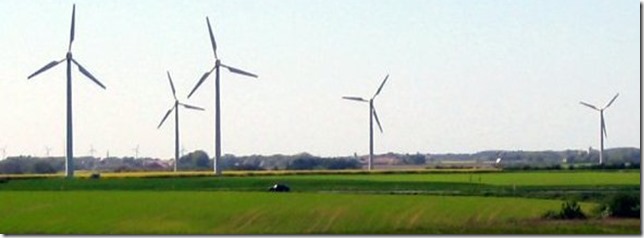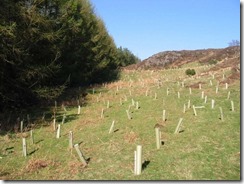Carbon Offsets Strategy for your Next Green Event
James Watson | Posted on |

1. Carbon offsets eliminate my event’s pollution… FALSE
A common misconception about carbon offsets is that they actually eliminate any pollution your event produces. This is absolutely false (Shawna McKinley’s blog post busts this myth). What they do is “neutralize” the pollution that your event produces by offsetting it with the pollution reduction efforts of another organization (e.g. a methane gas recapture project at a local landfill).
The primary problem here arises when an event’s promotional materials fail to communicate this aspect clearly. Carbon offsets are still a fairly abstract and little known concept outside of the environmental sphere. Therefore, to some of your attendees, “carbon neutral” might actually be perceived as “pollution-less”. That is misleading and a subtle example of green washing.

It’s your responsibility to make sure your event’s carbon offset claims are represented properly. Here are some tips:
- Do not make any grandiose claims about your carbon offsets. Be subtle – people don’t want to see “green, green, GREEN!” messaging everywhere.
- When you do make a claim to your event’s carbon neutrality (e.g. a placard on-site or the website) be sure to include a little more information about it. For example, you might say: “This event has produced an estimated XXXX tonnes of CO2. We have offset that by purchasing offsets from this project.”
2. All carbon offsets are created equal… FALSE
Carbon offsets are not created equally – plain and simple. Their quality can vary dramatically and will depend on factors like the type of project they are from or whether they’re sourced locally. Allow me to illustrate this point.

Imagine you’re planning an event in New York and your client wishes to purchase local carbon offsets. Their first option might be to purchase offsets from a tree farm upstate that will commit to planting “X” amount of trees to offset the estimated carbon footprint of the event. The problem, however, is that these could constitute poor quality offsets. For one, they don’t satisfy the measure for “permanence” (it’s difficult to guarantee they won’t be cut or burned down in 20 years) and the issue of “additionality” is in question too (common practice in the area might have been to replant those trees regardless).
An example of good quality carbon offsets would be a community housing project that intends to fund the installation of solar panels on its roof through the sale of carbon offsets that the project will produce. In this instance, the project’s “permanence” is easier to guarantee and its “additionality” is more convincing.
Do your due diligence and make sure you are purchasing high quality offsets for your next green event. It’s your reputation on the line, after all. Here are some tips:
- Consider the cost of each offset, which will often directly reflect their quality.
- Learn about the projects the offsets are sourced from and be certain you can obtain specific information. If you cannot, chances are they’re hiding something.
- Consider the firm you are purchasing the offsets from. Do they give you the option to source locally? Are they reputable? Who are their past clients?
- Finally, review this excellent report by the David Suzuki Foundation: Purchasing Carbon Offsets. It does a great job of explaining carbon offsets in more detail.
Final thoughts on carbon offsets and green events
Carbon offsets are a great tool for the green event planner. The key is to use them strategically. To avoid any acquisitions of green washing, carbon offsets should only be used as a complement to a comprehensive event sustainability strategy. One should also be aware of the quality of the offsets they intend to purchase and how to compare their options.
If you are serious about reducing the negative environmental impact of your events and leveraging it as a competitive advantage for you business, contact us at Green Event Ninjas. Whether it’s a single event or a series you have planned for the calendar year, we can help you get started on the right path.

2 Comments